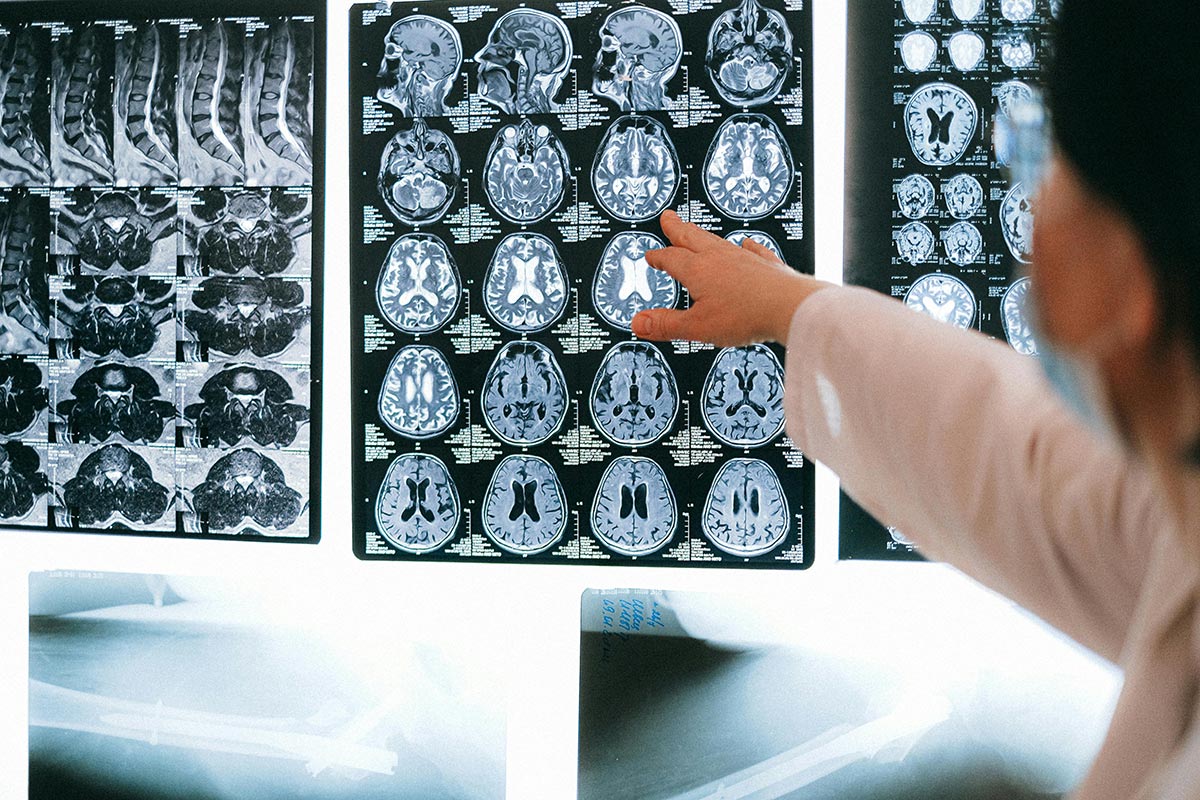
Understanding Drug Abuse
Drug abuse remains a significant concern in society, impacting individuals and communities alike. Understanding its implications, particularly regarding accidental overdoses and associated costs, sheds light on this pressing issue.
Impact of Accidental Drug Overdose
Accidental drug overdoses are a leading cause of death for individuals under the age of 45, highlighting the urgent nature of this public health crisis. Each year, more than 40,000 people in the United States die as a result of opioid overdoses (NCBI Bookshelf). The primary reason behind these overdoses is often the misuse of prescription pain medications, with over 10 million individuals misusing these drugs annually.
| Year | Deaths from Opioid Overdoses |
|---|---|
| 2017 | 47,000 |
| 2018 | 67,000 |
| 2019 | 70,000 |
| 2020 | 93,000 |
These statistics underscore the severity of the issue, particularly within the context of the opioid crisis, which the CDC has declared an epidemic. Such data reflects the critical need for effective interventions and awareness surrounding safe medication practices.
Cost of Drug Abuse in the US
The economic burden of drug abuse on American society is staggering. In 2017, drug abuse cost the nation nearly $272 billion. This figure encompasses various factors, including crime, healthcare needs, lost productivity, and other societal impacts.
| Cost Factor | Estimated Annual Cost (Billion $) |
|---|---|
| Crime | 26 |
| Healthcare | 11 |
| Lost Productivity | 249 |
| Total | 272 |
The substantial financial resources that drug abuse consumes emphasizes its widespread ramifications. Beyond the human cost, which includes the risk of limb loss, the financial strain poses a challenge for communities, healthcare systems, and policymakers as they strive to mitigate the effects of drug misuse.
Information regarding drug abuse not only deepens public understanding but also stresses the importance of prevention and treatment efforts. For insights into addiction mechanisms, explore articles on addiction on the brain and is addiction a disease?.
Health Risks of Drug Abuse
Understanding the health risks associated with drug abuse is crucial for preventing the consequences that may arise from such behaviors. These risks include a heightened likelihood of viral infections, perspectives from law enforcement regarding drug threats, and the effectiveness of prescription drug monitoring programs.
Viral Infections and Drug Abuse
High-risk behaviors linked to drug abuse significantly increase the chances of contracting viral infections such as hepatitis and HIV (Drug Abuse Statistics). Injection drug users are particularly vulnerable, as sharing equipment or fluids can lead to severe health complications. Below is a table summarizing some common viral infections related to drug abuse:
| Viral Infection | Risk Factor |
|---|---|
| Hepatitis B | Sharing needles |
| Hepatitis C | Sharing needles |
| HIV | Unprotected sex, sharing needles |
These infections can have lasting impacts not only on the users' health but also on public health systems, making it imperative to address drug abuse comprehensively.
Law Enforcement Perspective on Drug Threats
From a law enforcement standpoint, the threats imposed by certain drugs are a significant concern. Nearly 70% of law enforcement agencies in the western and midwestern regions of the United States identify methamphetamine and fentanyl as the primary threats to their communities (Drug Abuse Statistics). These substances lead to increased crime rates and health crises, complicating both community safety and health response efforts.
| Drug Threat | Percentage of Agencies Concerned |
|---|---|
| Methamphetamine | 70% |
| Fentanyl | 70% |
The focus on these drug threats highlights the need for increased awareness and resources for prevention and treatment programs.
Effects of Prescription Drug Monitoring Programs
Since the early 2010s, states that have enhanced their prescription drug monitoring programs (PDMPs) have reported significant improvements in drug abuse treatment and prevention. Programs that monitor prescriptions help to reduce over-prescribing and identify patients at risk of addiction.
| Year | Effectiveness of PDMPs |
|---|---|
| 2010 | Initial implementation |
| 2015 | Review of results showed significant reductions in prescription drug abuse |
Enhanced monitoring systems allow for better tracking of prescription drugs, leading to a decrease in the potential for misuse.
The connection between drug abuse and various health risks emphasizes the importance of education and preventive measures. Addressing questions such as does drug abuse cause limb loss? can help ignite discussions about the serious repercussions of drug use on physical health and well-being.
Amputation Complications
Amputation can be a necessary procedure for those suffering from severe injuries or illnesses, including complications from drug abuse. Understanding the complications associated with amputation and how they can impact an individual's life is essential for recovery and rehabilitation.
Risks of Amputation
Amputation involves specific risks and complications that can vary depending on whether it is planned or performed in an emergency situation. Generally, the risk of serious complications is lower in planned amputations compared to emergency ones NHS. Complications can include:
| Type of Complication | Description |
|---|---|
| Infection | Increased risk due to exposed tissue. |
| Blood clotting | Can lead to further complications if not monitored. |
| Nerve damage | May result from the procedure itself. |
Proper medical care and adherence to post-operative guidelines can help mitigate these risks.
Stump and Phantom Limb Pain
Many individuals who undergo amputation experience some form of stump pain or so-called "phantom limb" pain. The symptoms can range from mild to severe, with some experiencing constant discomfort NHS. Common causes include:
| Cause of Pain | Description |
|---|---|
| Rubbing or sores | Occurs where the stump makes contact with a prosthetic limb. |
| Nerve damage | Can result from the surgical procedure. |
| Neuromas | Benign growths of nerve tissue can cause pain. |
While stump and phantom limb pain often improves over time, treatments such as medications and non-invasive techniques like mental imagery may be beneficial for relief.
Adjusting to Life with a Prosthetic Limb
Adjusting to life with a prosthetic limb can require significant physical and emotional adaptation. An individual must account for changes in balance and mobility, as they may need to compensate for the loss of muscle and bone in the amputated limb. This adjustment can be especially demanding for individuals with pre-existing health conditions, such as heart disease, as they may not be suitable candidates for prosthetic limbs (NHS).
Support from healthcare providers and rehabilitation services is crucial as individuals navigate the challenges of using a prosthetic limb. Families and communities can also play a vital role in providing emotional and practical support during this significant transition.
In understanding how drug abuse might lead to limb loss, it is essential to recognize the broader implications of complications such as those detailed here. For additional insights into the complexities of addiction, explore topics on addiction on the brain and is addiction a disease?.
Drug Abuse and Physical Consequences
Understanding the physical consequences of drug abuse is essential in recognizing the urgent need for treatment and prevention. The effects of substance use can be severe and often lead to significant health issues.
Chronic Heroin Use and Complications
Chronic heroin use can result in various serious health complications, which often escalate over time. Users may develop scarred and collapsed veins due to repeated injections. This physical damage increases the risk of bacterial infections in blood vessels and heart valves, as well as abscesses and soft-tissue infections (NIDA). Additionally, chronic users may suffer from mental health disorders such as depression and antisocial personality disorder.
| Complication | Description |
|---|---|
| Collapsed Veins | Damage from repeated injections |
| Bacterial Infections | Infections in blood vessels and heart valves |
| Abscesses | Pockets of pus in tissues |
| Mental Disorders | Depression and personality disorders |
Infections from Injection Drug Use
The method of using injected drugs poses significant risks, especially when sharing needles. Injection drug users are particularly vulnerable to infections with hepatitis B, hepatitis C, HIV, and other blood-borne viruses. Sharing equipment or fluids can have very severe consequences for health, potentially leading to chronic illnesses that are life-threatening (NIDA).
Furthermore, the additives often found in street heroin can also create difficulties. Some substances may clog blood vessels, which could lead to infections or even necrosis (death of tissue) in vital organs.
| Infection Type | Transmission Method | Consequences |
|---|---|---|
| Hepatitis B | Sharing needles | Liver disease |
| Hepatitis C | Sharing needles | Liver disease |
| HIV | Sharing needles | Immunodeficiency syndrome |
Musculoskeletal Complications of Drug Abuse
Drug abuse can lead to various musculoskeletal complications, including chronic pain, weakness, and even limb loss. The body often bears the brunt of drug use, with various functions suffering due to the overall health decline. For example, chronic use of certain substances can lead to muscle deterioration and joint pain. In severe cases, ongoing infections or complications from drug use can necessitate amputation.
| Complication | Potential Effects |
|---|---|
| Chronic Pain | Persistent discomfort from injuries |
| Muscle Weakness | Reduced strength and mobility |
| Joint Pain | Inflammation and pain in joints |
| Limb Loss | Resulting from severe infections or complications |
Addressing these physical consequences is vital in the discussion surrounding how the question, does drug abuse cause limb loss?, highlights the need for awareness and treatment options. Understanding the risks involved can aid in prevention and create pathways for those struggling with addiction.
Opioid Crisis and Health Impact
The opioid crisis has become a significant public health issue in the United States, marked by alarming statistics related to opioid overdoses and ongoing concerns about addiction.
Opioid Overdose Statistics
In the United States, over 40,000 individuals die each year from an opioid overdose, highlighting the severity of this health crisis. Moreover, more than 10 million people misuse prescription pain medications annually, which contributes significantly to this epidemic.
| Year | Estimated Deaths from Opioid Overdose |
|---|---|
| 2018 | Approx. 46,800 |
| 2019 | Approx. 50,000 |
| 2020 | Approx. 68,000 |
| 2021 | Approx. 75,000 |
These figures reflect a worrying trend and emphasize the critical need for awareness around opioid use and its ramifications.
Concerns Surrounding Ongoing Opioid Crisis
Although the prescribing of opioid analgesics peaked in 2011, both prescriptions and overdose rates have begun to decline. However, the concerns in society regarding the ongoing opioid crisis remain significant. Many individuals continue to struggle with addiction and dependency on these medications, leading to health complications, including questions such as does drug abuse cause limb loss?.
The persistence of this crisis has led to widespread discussions on the necessary measures to address it effectively, including better education on addiction and access to treatment.
CDC Declaration on Prescription Drug Abuse
The Centers for Disease Control and Prevention (CDC) has officially declared prescription drug abuse an epidemic. This declaration underscores the urgent need for intervention, as more than 10 million Americans are estimated to misuse prescription pain medications each year (NCBI Bookshelf). The CDC's focus on this issue has galvanized efforts to educate the public about the dangers of opioid misuse and promote effective treatment options.
With the continuous rise in addiction and related health issues, it is essential for individuals to be informed about the risks associated with opioid use and the available resources for those seeking help. Topics such as myths & misconceptions about addiction can help enhance understanding and awareness regarding this pressing matter.
Drug Abuse and Limb Loss
Link Between Drug Abuse and Limb Loss
Research indicates a clear association between drug abuse and limb loss, particularly through drug-induced limb necrosis. This serious condition occurs when the blood vessels supplying the limbs become damaged or blocked due to the effects of drugs, leading to tissue death and potentially necessitating amputation (Arista Recovery).
Long-term use of certain drugs, such as opioids, cocaine, and methamphetamine, has been linked to severe health complications that can result in limb loss. These drugs can cause circulatory problems that impede blood flow to the extremities, significantly increasing the risk of amputation when tissue damage occurs.
Physical Consequences of Illicit Substance Use
Illicit substance use can lead to devastating physical consequences, including infections and gangrene. The following table outlines some of the critical health issues associated with various drugs that may lead to limb loss:
| Drug Type | Associated Risks |
|---|---|
| Opioids | Peripheral arterial disease (PAD), deep vein thrombosis (DVT) |
| Cocaine | PAD, DVT, tissue damage |
| Methamphetamine | PAD, DVT, tissue damage |
| Intravenous Drugs | Higher likelihood of infections and complications |
Prolonged opioid abuse can result in multiple health complications, including PAD and DVT, which compromise blood flow to the limbs. Furthermore, both cocaine and methamphetamine are known for their adverse effects on vascular health, increasing the risk of severe tissue damage that could lead to limb loss.
Intravenous Drug Use and Amputation Risk
Intravenous drug use has been identified as a significant risk factor for limb loss. A study conducted in Seattle, Washington, demonstrated that patients with a history of intravenous drug abuse were 8.5 times more likely to have long-term residual disability and had a higher chance of requiring a second amputation due to prosthetic limb infections (Arista Recovery). IV drug use introduces a range of complications, including infections that can spread rapidly, leading to gangrene and necrosis.
Overall, the ramifications of drug abuse encompass a broad spectrum of health challenges, underscoring the urgent necessity for education and treatment options. Individuals grappling with substance use disorders should seek assistance to mitigate these severe risks associated with their addiction. For more information on the effects of addiction on health, visit our page on addiction on the brain.
.svg)





